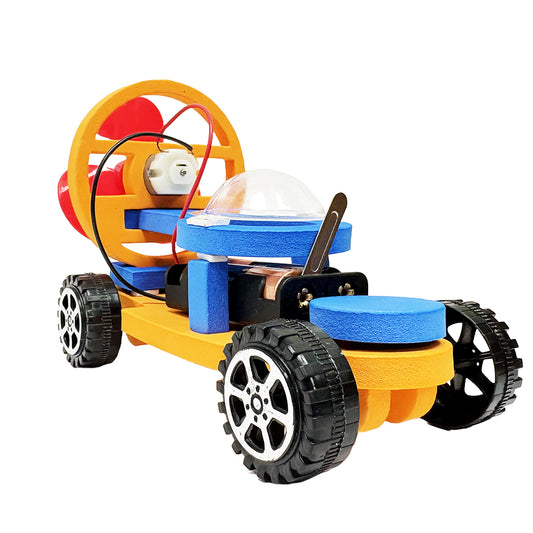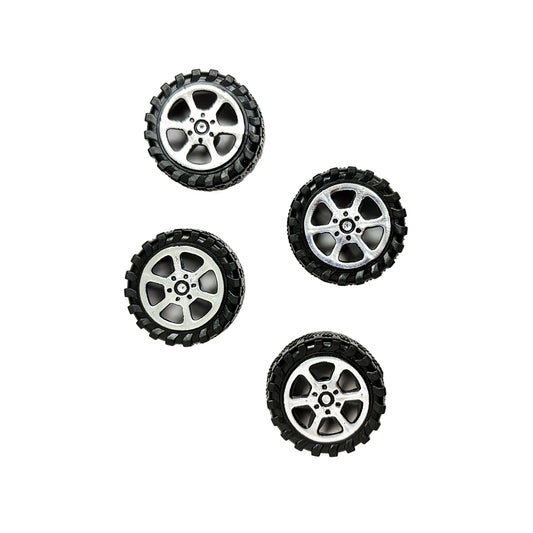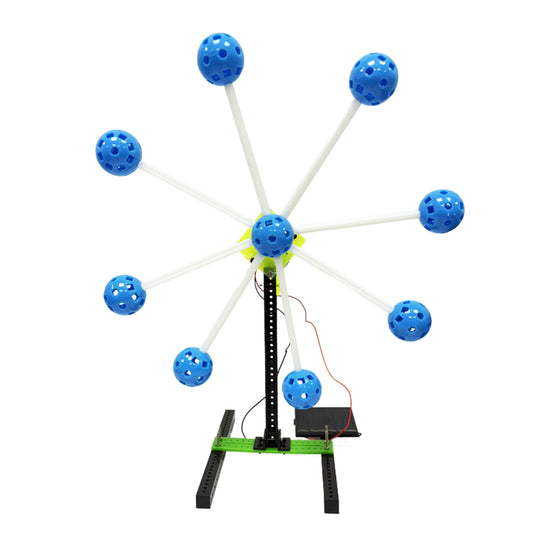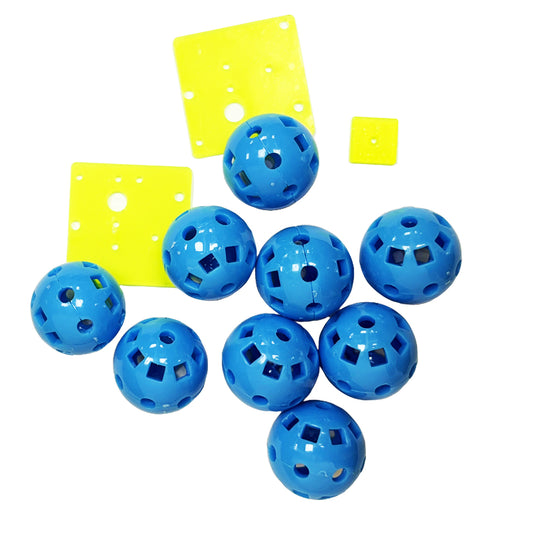
Male to Female Jumper Wires: Essential Guide For Prototyping
IEM RoboticsTable Of Content
-
What Are Male to Female Jumper Wires?
-
The Three Types of Jumper Wires
-
Why it is Called Male to Female Jumper Wire?
- How to identify jumper wires Male or Female?
-
Jumper Wires Variations
- Applications of Male to Female Jumper Wires
- How to Connect Male-to-Female Jumper Wires with Raspberry Pi
- Common Raspberry Pi Projects Using Male-to-Female Jumper Wires
- How to Convert Male to Female Jumper Wires
-
Conclusion
Jumper wires are crucial in electronics and prototyping, especially when dealing with breadboarding, Arduino projects, and circuit design applications. Among these, male to female jumper wires are a highly prized product that is easily applicable and useful for multiple uses. This helps attach various components and does not require soldering.
Hence, jumper wires are a part of many electronics enthusiasts' tools and professionals. This article will talk in detail about what male-to-female jumper wires are, their usage, how they are to be used, and other important considerations when working with them.
What Are Male to Female Jumper Wires?
Male-to-female jumper wires are insulated conductive wires with a male connector (pin) on one end and a female connector (socket) on the other. This makes them ideal for connecting components, modules, or breadboards in an electrical circuit. The male end is usually intended to plug into a female header or socket, while the female end is to accept a male pin.
These wires are a temporary, easy-to-use connection between components, thus eliminating soldering in most cases. The male to female jumper wires are widely used in breadboarding and prototyping as they offer flexibility, reusability, and ease of modification when testing different circuit configurations.
The Three Types of Jumper Wires
Jumper wires are generally categorized into three major types, each with different applications:
● Male-to-Male (M-M): Both ends of the wire have male connectors (pins).
● Female-to-Female (F-F): Female connectors at each end of the wire.
● Male-to-Female (M-F): One connector is a male connector or a pin, and a female connector is at the other end of the wire.
These jumper wires male to female, among others, help replace header pins when connecting to microcontroller boards, sensors, displays, and other peripheral modules. Indeed, one of the significant reasons why jumper wires are widely used is their versatility in professional and hobbyist electronics.
Why it is Called Male to Female Jumper Wire?
● Connector Structure:
Male and female refer to the physical design of the connectors. A male connector has one end with a protruding pin or prong designed to fit into another complementary component. A female connector, in turn, has a socket or receptacle to receive the male pin securely. This provides a solid and stable connection between the components, allowing the flow of electricity or signals without interruptions.
● Naming Convention:
The "male" and "female" have been used in many industries, not just electronics. The nomenclature is intuitive, representing the way the connectors relate to each other. It is universal terminology that makes understanding how different parts fit together more effortless. The same concept applies in other fields, such as mechanics and automotive engineering, where parts often come in male and female configurations to ensure a proper fit.
● Male-to-female jumper wires
The female to male jumper wires refer to jumper wires where one end has a male pin that can be inserted into a female socket, such as on a breadboard or microcontroller. The other end of the jumper wire has a female socket that accepts a male pin, such as from a sensor or other component. This makes it versatile and easy to connect different elements in a circuit without soldering or permanent connections, allowing rapid prototyping and experimentation.
● Functionality:
Male-to-female jumper wire configuration is necessary in electronics since it can connect various components using different connectors. This allows engineers and hobbyists to make speedy connections temporarily to test or build circuits.
Since it would be easier to select between a jumper wires male to female, according to the type of application, it helps one have safe and secure connections.
● Ease of Identification:
The male and female naming system distinguishes the variety of jumper wires. It is easier for engineers, hobbyists, and manufacturers to select the correct wire for each project. Also, it avoids confusion on compatibility parts and connectors.
This standardized system, whether in a breadboard, microcontroller, or any electronic module, lets them know what to do and ensures their connections are correctly and safely done. It is considerably helpful when designing circuits because the straightforward terminology removes any ambiguity in choosing the proper male to female wire for the task at hand.
How to identify jumper wires Male or Female?
The most obvious way of determining whether jumper wire is a male or a female is due to the physical difference in its connectors:
● Female Jumper Wire: This wire has an end with a hollow socket; it accepts a pin from a male connector.
● Male Jumper Wire: This wire has a solid metal pin at the end, which allows it to enter a female socket or breadboard hole.
Jumper Wires Variations
● Male-to-Male (M-M): Both ends have pins.
● Female-to-Female (F-F): Both ends have sockets.
● Male-to-Female (M-F): One end has a pin (male), and the other end has a socket (female).
By looking at the connectors, you can quickly determine whether a jumper wire is male, female, or a combination of both.
Applications of Male to Female Jumper Wires
Male-to-female jumper wires are applied in a wide range of applications across various fields, including:
1. Prototyping and Breadboarding
The most common uses of male and female jumper wire are prototyping and breadboarding. Jumper wires connect components like resistors, capacitors, and integrated circuits on a breadboard easily and quickly. Since the connections are temporary, jumper wires are ideal for testing and modifying circuit designs without soldering.
2. Arduino and Raspberry Pi Projects
Male-to-female jumper wires are critical in projects that use microcontrollers, such as Arduino and Raspberry Pi. These wires attach sensors, actuators, displays, and modules to the GPIO pins of microcontroller boards, simplifying temporary connections and making prototyping faster.
3. Electrical Testing and Debugging
Jumper wires are also widely used for testing and debugging electrical circuits. In circuit troubleshooting, male-to-female jumper wires can be used to make temporary connections to test the functionality of different components or repair broken circuit links. They are invaluable for quickly diagnosing issues during the testing phases.
4. Interfacing Modules
Male-to-female jumper wires connect various breakout boards, displays, shields, and other electronic modules. They are usually used to connect components that need to interface in more complex systems, such as IoT projects or robotic designs.
5. Educational Purposes
Male-to-female jumper wires are widely used in DIY electronics projects in educational settings. These jumper wires allow students and beginners to experiment with circuit building without the steep learning curve of soldering. They also provide a safe and easy method of connecting components when learning about electrical principles and basic programming.
Male to Female Jumper Wires in Raspberry Pi Projects
Male-to-female jumper wires are among the most frequently used applications for Raspberry Pi, a widely used platform for educational projects and DIY electronics. The board contains GPIO pins that enable the user to connect peripherals, sensors, and actuators. The male and female jumper wire allow such components to be quickly and dependably connected to the Raspberry Pi board without soldering.
How to Connect Male-to-Female Jumper Wires with Raspberry Pi
● Identify GPIO Pins: The Raspberry Pi has a 40-pin GPIO header. Refer to a GPIO pinout diagram to identify each pin's function and the proper connections for your project.
● Connect with Components: Use male to female jumper wires to connect the Raspberry Pi GPIO pins to external modules such as LEDs, temperature sensors, displays, motors, or other peripherals.
● Ensure Proper Wiring: Double-check the wiring to avoid loose connections or short circuits. Use resistors where needed, particularly when connecting components like LEDs that may require current limiting.
● Run Code for Interfacing: Utilize Python or other programming languages to interface with the connected components via Raspberry Pi’s GPIO library.
Common Raspberry Pi Projects Using Male-to-Female Jumper Wires:
● Controlling LEDs and Buzzers using GPIO pins.
● Interfacing of Sensors such as DHT11 for temperature, humidity, and other monitoring purposes.
● Designing of IoT System through the Internet by connecting Wi-Fi and Bluetooth modules.
● Home Automation System using relay modules.
● Display Interfacing on LCD/OLED Displays using visual output.
The male to female jumper wires raspberry pi are crucial for rapidly developing projects on the Raspberry Pi platform.
How to Convert Male to Female Jumper Wires
Converting male-to-female jumper wires is easy and can be accomplished with simple tools. Here is a quick guide on how to make male jumper wire to female-
Materials Needed:
● Male-to-female jumper wires
● Male or female header pins
● Soldering iron and solder
● Heat shrink tubing or electrical tape (optional)
Steps:
● Strip the Wire: Strip 1–2 cm of insulation from both ends of the jumper wire.
● Attach Header Pins:
1. To convert to male-to-male (M-M), solder a male header pin to the female end.
2. To convert to female-to-female (F-F), solder a female header socket to the male end.
● Solder the Connections: Insert the wire into the pin/socket and solder it.
● Insulate (Optional): Apply heat shrink tubing or electrical tape to cover exposed areas.
● Test the Conversion: Inspect the connections with a multi-meter and ensure everything works.
How to Connect Male to Female Jumper Wires
● Step 1: Identify the Connection Points
Identify the components you need to connect before you use jumper wires. Use pinout diagrams of microcontrollers, sensors, and other modules to determine where each connection should be made.
● Step 2: Insert the Male End into a Female Socket
Connect the male end of the jumper wire to a female header on the microcontroller or module. The pin should fit snugly so the connection does not come loose.
● Step 3: Insert the Female End onto a Male Pin
Insert the female end of the jumper wire into a male pin, which might be a part of a sensor or a breakout board. This connection must also be snug.
● Step 4: Check the Circuit Connections
Double-check your connections using a wiring diagram or schematic to ensure no short circuits or errors.
● Step 5: Test the Circuit
Power up your circuit and test its functionality. If the circuit is not working as expected, use a multi-meter to check for continuity and troubleshoot the connections.
Conclusion
A male-to-female jumper is versatile and essential for anyone working on electronics, whether a beginner or expert. It is easy to quickly connect components, flexible, and reliable without needing to solder any wires. You can ensure effective connections in projects by choosing the right jumper wire, following best practices, and troubleshooting common issues.
Whether you’re working on Arduino, Raspberry Pi, or any other electronics project, male to female jumper wires remain invaluable for prototyping, testing, and experimentation.








